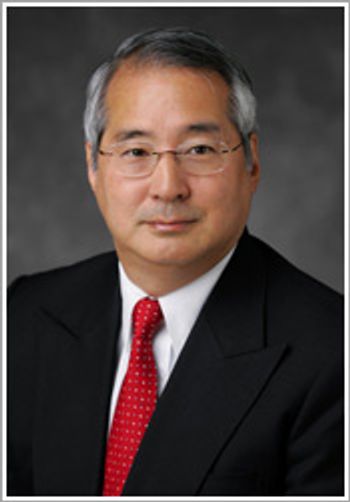
The challenge for senior leadership is to enable the layers of middle management to work to their full potential. Mike Straw argues that ‘failing fast’ should become the new mantra if pharma is going to drive greater innovation and creativity.

The challenge for senior leadership is to enable the layers of middle management to work to their full potential. Mike Straw argues that ‘failing fast’ should become the new mantra if pharma is going to drive greater innovation and creativity.

To understand just how far mobile and digital technology can truly influence progress in global healthcare, we first need to form the foundation of the discussion with a few rudimentary facts.

You would expect that, given a physician shortage, my goal of getting back into obstetrics would be supported and even welcomed.

The National Institutes of Health (NIH) announced yesterday that it is issuing nearly $32 million in grants for the development of strategies to analyze and leverage biomedical data sets.

Lurking in the shadows of the US General Elections is something called The Sequestration Transparency Act of 2011.

In a bit of good news for pharma, Moody’s Investors Service has upgraded its outlook for the global pharmaceutical industry to stable.

This month’s ePatient Connections Summit in Philadelphia, PA, saw biopharmaceutical firms, medical device companies, and patient advocates discuss best practices for engaging patients online and in social media settings.

What can be gleaned about the direction that health policy will take for the next five years under the new European Commission, scheduled to take office at the beginning of November? Peter O’ Donnell address this question in his new Applied Clinical Trials column here.

Although it is true that there are many legitimate ways to succeed, a host of these strategies appear to be diametrically opposite of one another: Diversified versus pure play, generic versus ethical, regional versus global, R&D versus limited R&D, organic development versus acquisitions, and so on.

A second payment has now been made under the UK’s Pharmaceutical Price Regulation Scheme (PPRS).

Pharmacovigilance controls are becoming firmly embedded in the European Union’s post-authorization regulatory system, with the European Medicines Agency (EMA) acting as the pivot for an EU-wide network of agencies monitoring medicines throughout their market lifespan.

Early-stage and mid-size bio/pharmaceutical companies have enjoyed an embarrassment of riches over the past 18 months.

The Chinese market is attractive to foreign investors for many reasons. It is the world’s third largest market for pharmaceuticals with annual sale of US$71 billion.

The role of medical affairs is taking on greater importance, as relationships between life sciences companies and external stakeholders become more complicated.

Pharmaceutical professionals, teams, and organizations can succeed at an elite level by tackling the tough mental challenges of Navy SEAL training, writes Stan Bernard.

Earlier this year, the newly approved EU Clinical Trials regulation (No 536/2014) was published in the Official Journal of the EU (OJEU).

The storms raging across Europe-and beyond-over the pricing of new hepatitis C treatments have been intensified by the European Union’s approval last week of the latest directly-acting antiviral, Bristol-Myers Squibb’s Daklinza (daclatasvir).

The English Cancer Drugs Fund (CDF), set up to provide funding for those products that the National Institute for Health and Care Excellence (NICE) has not recommended for use or where their guidance isn’t yet available, remains controversial.

It is a tragic truism to remark that the merits of the pharma sector are most sharply perceived only at times of deep human suffering.

The health sciences industry received some important and encouraging news from the US Food and Drug Administration (FDA) in late June-an announcement that may, ultimately, help to transform the way data is collected in clinical trials and lead to safer studies and faster time to market.

As more global life sciences firms see their Asian businesses skyrocket, the search for strong, internationally savvy talent in Asia-Pacific has never been more competitive, writes Susan Macdonald of RSA.

Applied Clinical Trials’ Lisa Henderson speaks to Novella Clinical CEO Richard Staub.

Eric Langer assesses the results of a recent survey of what biopharm companies want from CMOs.

Pharmaceutical Technology’s Faiz Kermani looks at the long history of pharma mergers and finds no sign of the trend slowing down.

There has been a lot of debate on the therapeutic use of marijuana. There are currently 24 states that have legalized marijuana for medical use.

Shrinking facility size, growth of biologics, and emerging market demand influence pharma investments. Pharmaceutical Technology’s Cynthia Challener offers summary of selected investments in both small- and large-molecule manufacturing facilities during the last year.

Three medical affairs experts - Sean Turbeville, David A. Wells, and Charles Wolfus - review the capabilities of Google’s latest technology for delivering information to healthcare professionals in the field.

As the life sciences industry looks to manage top and bottom line performance more effectively, there is a common concern among providers about the lack of in-house talent and expertise.

Siegfried Schmitt offers some steps that manufacturing companies can take to ensure data integrity.

In this Applied Clinical Trials article, Kadmon CEO Dr. Sam Waksal talks about the importance of imagination for innovation, current business risks in biopharma, and applying understanding to the concept of Big Data.

Published: October 31st 2014 | Updated:

Published: October 14th 2014 | Updated:

Published: October 14th 2014 | Updated:

Published: October 10th 2014 | Updated:

Published: September 30th 2014 | Updated:

Published: September 24th 2014 | Updated: